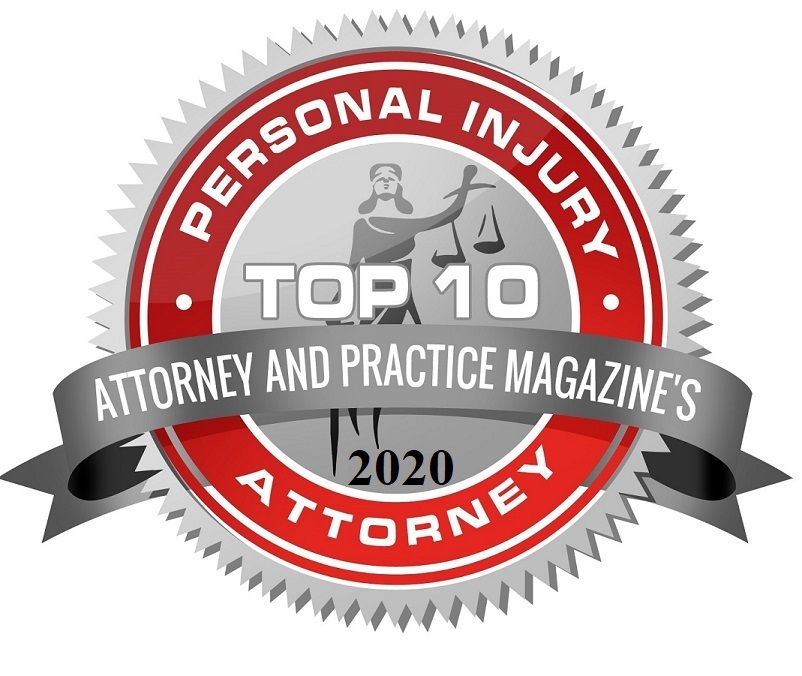It’s a particularly tragic and often devastating type of injury, sucking the fun from a day on Florida’s sunny waterways: a propeller injury.
Propeller injuries occur when individuals come into contact with the rotating blades of a boat or watercraft propeller. These accidents can result in catastrophic injuries and even fatalities. The sheer force and speed of a boat propeller can cause life-altering injuries in a matter of seconds, leaving victims and their loved ones facing physical, emotional, and financial hardships.
Whether you have been injured and believe you have a propeller injury case or are seeking information on behalf of a loved one, understanding the risks and legal options is essential for protecting your rights and pursuing just compensation.
At Serrano Law, we are committed to helping propeller injury victims seek justice and rebuild their lives.






What is a Propeller?
A propeller is a rotating device consisting of two or more blades that are shaped to produce thrust when driven through a fluid, such as water or air. In the context of boats, propellers are typically mounted on a shaft connected to an engine or motor, and they function by spinning rapidly to create a flow of water that propels the vessel forward.
The Role of a Propeller
The primary function of a propeller is to convert the rotational motion of an engine or motor into forward motion of the boat through the water. As the propeller blades rotate, they create a pressure difference between the front and back surfaces of the blades, generating thrust in the direction opposite to the rotation. This thrust propels the boat forward, allowing it to move efficiently through the water.
What is a Propeller Injury?
A propeller injury, also known as a propeller strike or propeller laceration, occurs when an individual’s body comes into contact with the rotating blades of a boat or watercraft propeller. These injuries can result in lacerations, amputations, fractures, and other severe trauma, often leading to permanent disability or death.
What Makes Propellers Potentially Dangerous?
Boat propellers pose a significant risk due to several factors. Firstly, they rotate at high speeds, making them extremely powerful and capable of inflicting severe injuries upon contact. Additionally, the blades of a propeller are usually sharp, designed to slice through water efficiently. This sharpness can lead to deep lacerations and traumatic injuries if a person comes into contact with them. Another risk is the placement of propellers; often located beneath the waterline, they can be hard to see, especially in murky or turbulent waters, increasing the likelihood of accidental injuries.
Types of Propeller Injuries
Propeller injuries encompass a diverse array of traumatic incidents, each varying in severity. These include deep cuts and lacerations that occur from the sharp edges of the propeller blades, slicing through skin and tissue. The sheer force of a propeller strike can also cause traumatic amputations, where limbs or body parts are severed. Furthermore, the impact might lead to broken bones and fractures. Soft tissue injuries are another consequence, involving damage to muscles, tendons, and other soft tissues either through the force of the impact or from being cut. In the most severe scenarios, such injuries can be fatal, leading to death due to overwhelming trauma and extensive blood loss.
Common Causes of Propeller Injury
Propeller injuries present a significant risk to those engaging in recreational boating, water sports, and maritime activities. Understanding the potential dangers is essential for staying safe on the water. One of the most frequent scenarios leading to such injuries involves accidental falls overboard. This is particularly common in boating or when participating in water sports, where a fall into the water can result in a propeller strike. Additionally, swimmers and divers are at risk when they are near boats or watercraft with running engines. Engaging in water sports like water skiing, wakeboarding, and tubing also exposes participants to potential propeller injuries, especially if they fall close to a boat with an active propeller. Moreover, collisions between boats or other watercraft can eject individuals into the water, putting them at risk of coming into contact with propellers from any involved vessel.
Case Results
Preventing Propeller Injury
Preventing propeller injuries involves a variety of methods, from devices and signage to adopting best practices. One effective device is the propeller guard, a protective cage that surrounds boat propellers, minimizing the chance of contact with the blades and reducing the severity of injuries if accidental contact occurs. Another critical safety feature is the kill switch, or engine cutoff switch, which automatically stops the engine if the operator is thrown overboard or loses control, preventing the boat from running away and posing a danger.
Additionally, placing warning signs on swim platforms or the boat’s transom can alert swimmers and divers of the propeller’s presence, encouraging them to keep a safe distance. Similarly, diver down flags used on dive boats or buoyed by divers themselves signal to nearby boaters that divers are below, increasing safety. Comprehensive education and training on propeller safety are also crucial. This includes teaching proper boat handling, awareness of the areas around the boat that pose the most risk, and the necessary emergency procedures to follow in the event of an accident. These combined efforts play a vital role in reducing propeller-related injuries.
Actions to Take to Be Safe Around Propellers
Stay Clear of Propeller Danger Zones:
Always maintain a safe distance from the rear and sides of boats and watercraft where propellers are located. Avoid swimming, diving, or engaging in water sports near running engines or propellers.
Use Lookout Spotters
Designate a lookout spotter to keep watch for swimmers, divers, or obstacles in the water and alert the operator to potential hazards. Clear communication and coordination between the operator and lookout are essential for safe navigation.
Turn Off the Engine When Near Swimmers
Whenever possible, turn off the boat engine or shift into neutral when swimmers or divers are in the water nearby. This reduces the risk of accidental propeller engagement and allows for safer recreational activities.
Maintain Proper Boat Maintenance
Regular maintenance and inspection of boat propellers, engines, and mechanical systems are essential for ensuring safe operation and reducing the risk of mechanical failures or malfunctions that could lead to propeller accidents.
Client Testimonial
Multi-Collision Car Accident
The Key Parts of a Propeller Injury Suit
When individuals suffer harm due to propeller accidents, pursuing a personal injury lawsuit may be necessary to seek justice and obtain compensation for their losses. To win a such a cases, these essential elements must be met:
Duty of Care
The first element of a propeller injury lawsuit involves establishing that the defendant owed a duty of care to the plaintiff. This duty may vary depending on the circumstances but generally refers to the legal obligation to exercise reasonable care to prevent harm to others. For example, boat operators have a duty to operate their vessels safely and avoid posing risks to others in the water.
Breach of Duty
The next step is to demonstrate that the defendant breached this duty of care through negligent or wrongful actions. This could involve operating a boat recklessly, failing to maintain proper lookout, or ignoring safety regulations regarding propeller guards.
Causation
It must be shown that the defendant’s breach of duty directly caused the plaintiff’s propeller
injury. This requires establishing both factual causation (i.e., the injury would not have occurred “but for” the defendant’s actions) and legal causation (i.e., the defendant’s actions were a foreseeable and natural cause of the injury).
Damages
Finally, to succeed in a propeller injury lawsuit, the plaintiff must prove that they have suffered compensable damages as a result of the defendant’s negligence. Damages can include both economic losses (such as medical expenses, lost wages, and property damage) and non-economic losses (such as pain and suffering, emotional distress, and loss of enjoyment of life).
Damages that can be Awarded in a Propeller Injury Case
In cases involving propeller injuries, the victims may pursue compensation through a lawsuit, seeking redress for a variety of damages. These damages include medical expenses, which cover costs associated with treatment, surgeries, rehabilitation, and any ongoing care needed due to the injury. Victims can also claim lost wages if they are unable to work during their recovery period.
Additionally, compensation can be sought for property damage, particularly if personal items like boats or other watercraft are damaged in the accident. More intangible forms of suffering, such as pain and suffering and loss of consortium, are also recognized. Pain and suffering encompass the physical pain, emotional distress, and mental anguish from the injury, while loss of consortium covers the impact on the victim’s relationships, including loss of companionship and support from a spouse or family members.
The repercussions of propeller injuries are often profound, affecting the physical, emotional, and financial wellbeing of victims and their families. Filing a personal injury lawsuit may be a critical step in holding responsible parties accountable and securing necessary funds to assist in recovery and moving forward with their lives.
Fighting for the Compensation You Deserve
A propeller injury is among the most tragic and devastating of accidents that can occur on the water.
If you or a loved one has been injured in a propeller incident or other boat accident, it is crucial to seek legal guidance as soon as possible. Our team at Serrano Law is dedicated to providing compassionate support and tireless advocacy to propeller injury victims in Florida. We understand the complexities of personal injury law and are committed to fighting for the justice and compensation you deserve.
Don’t wait to pursue your legal rights. Contact our office today to schedule your consultation and discuss your case with an experienced personal injury attorney. Let us help you navigate the legal process and seek the compensation needed to rebuild your life and move forward. Your recovery and well-being are our top priorities, and we are here to fight for you every step of the way.



